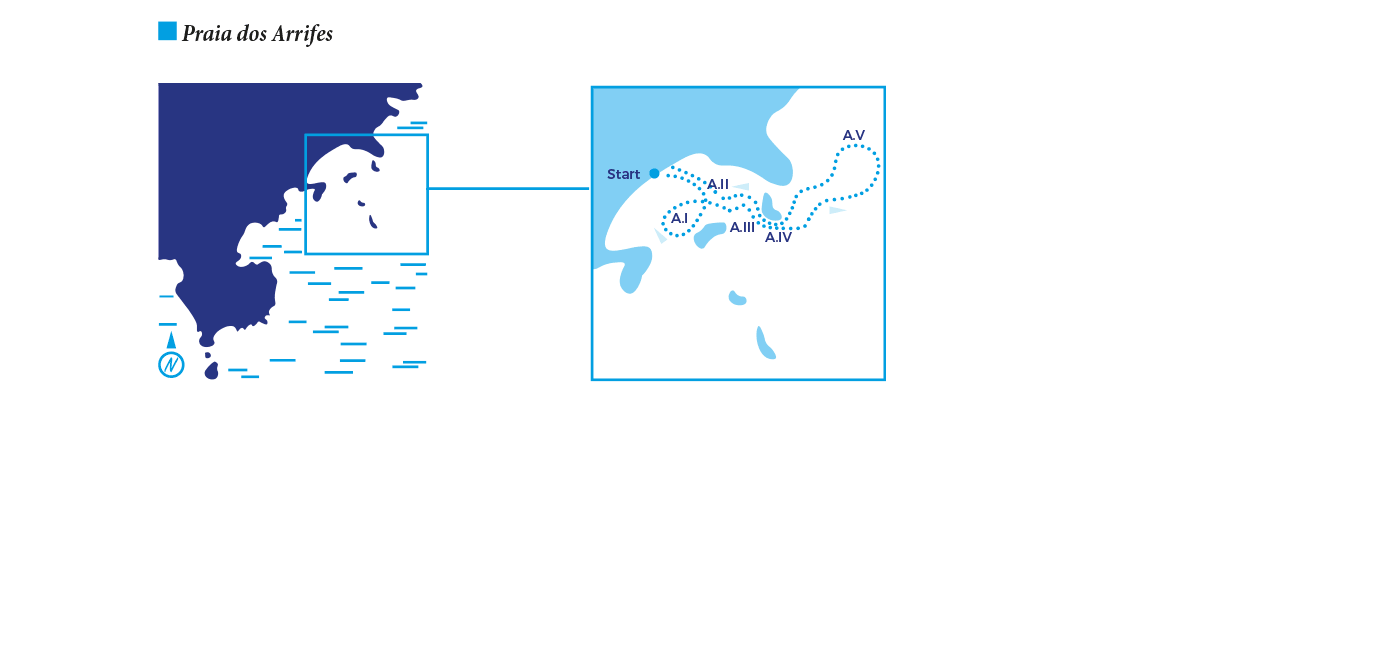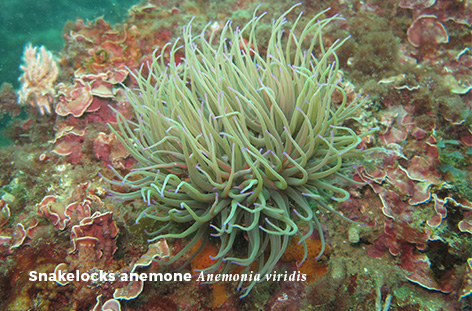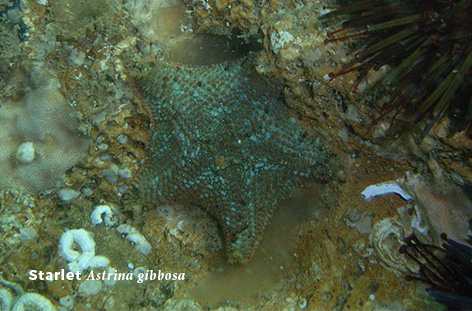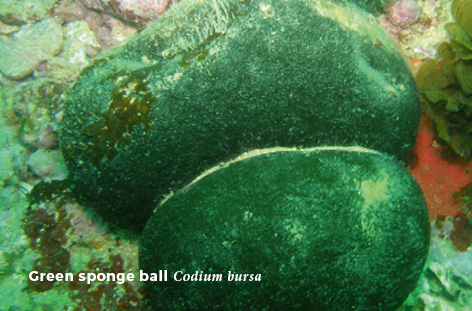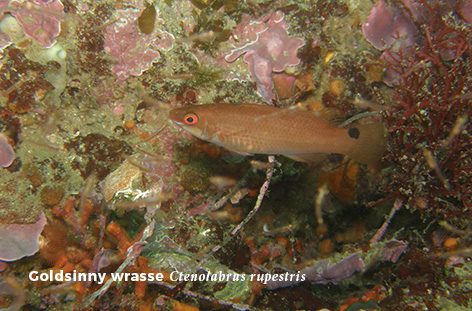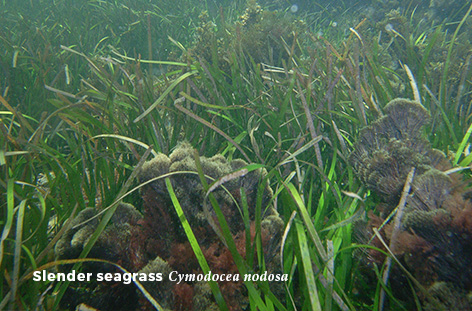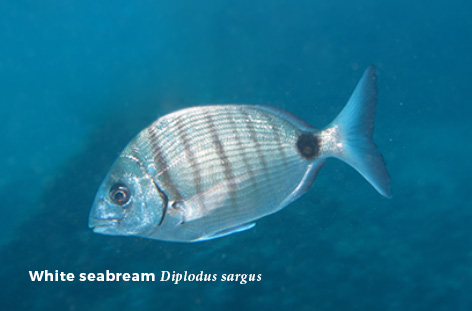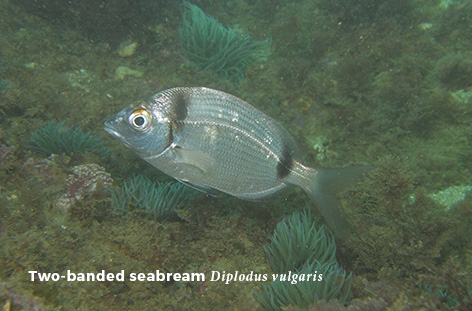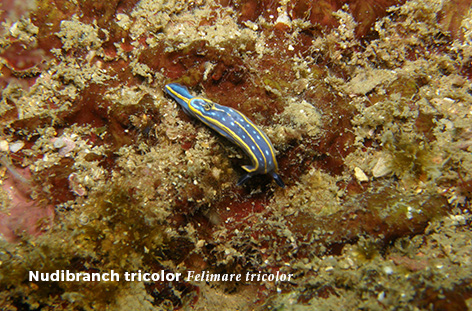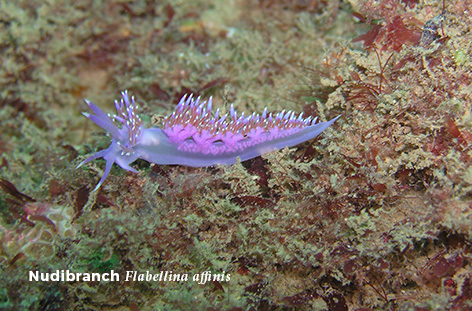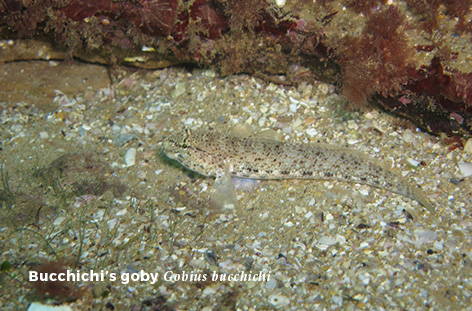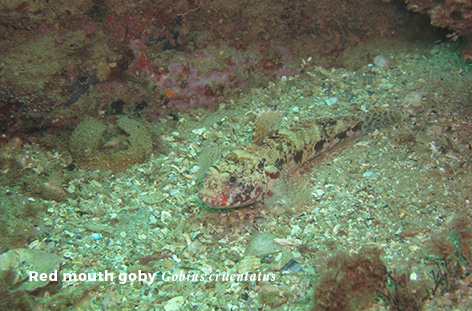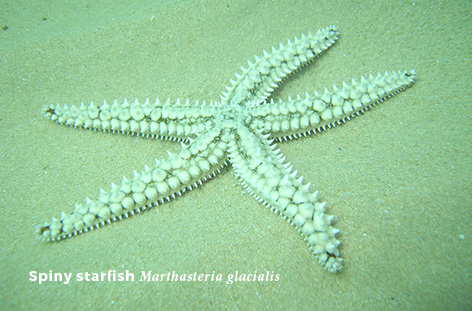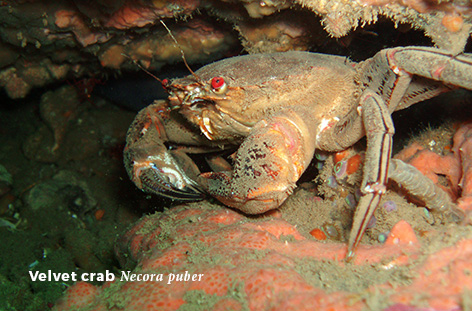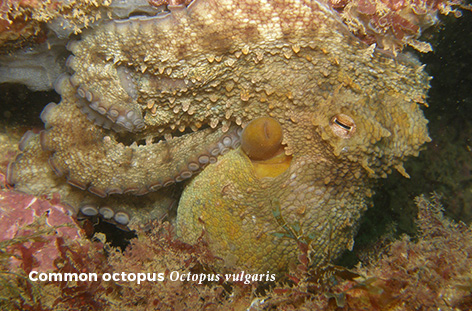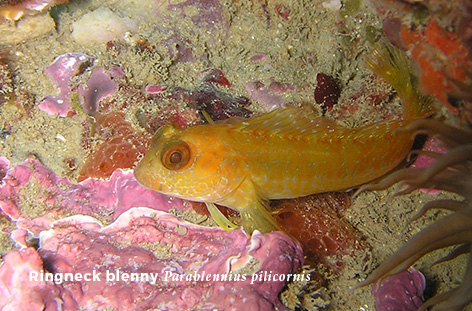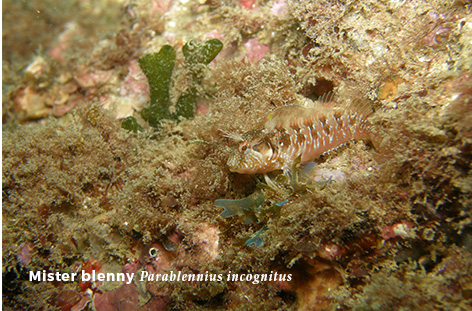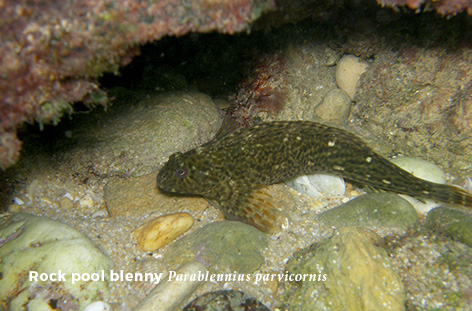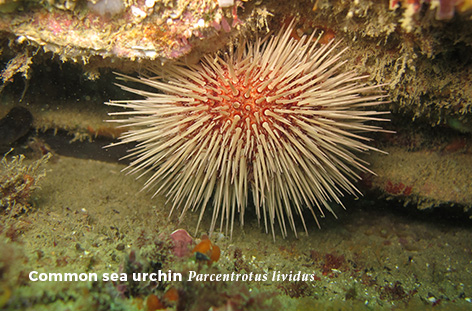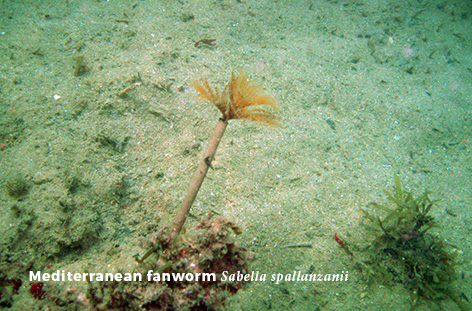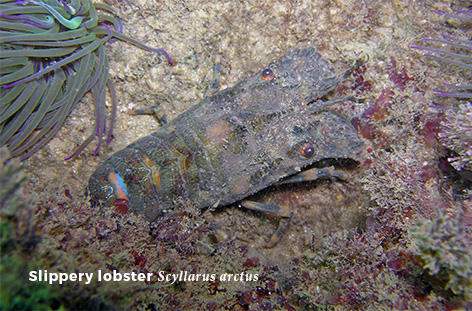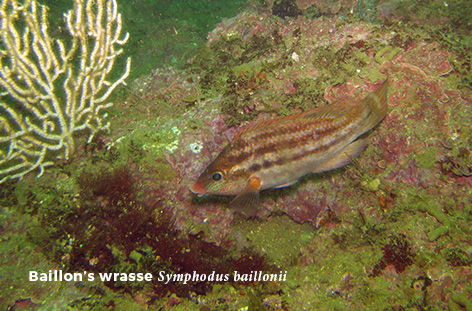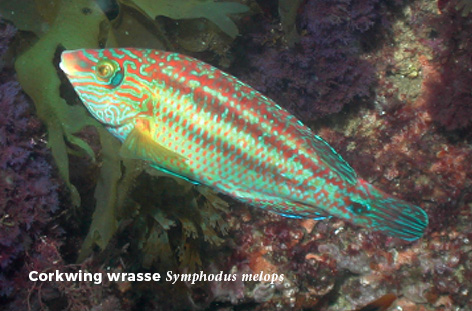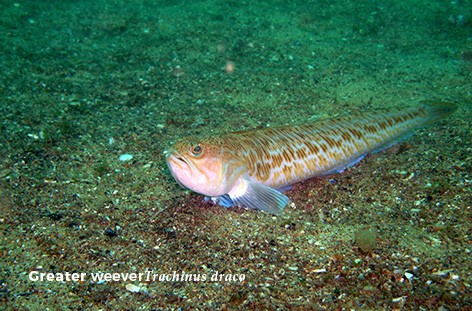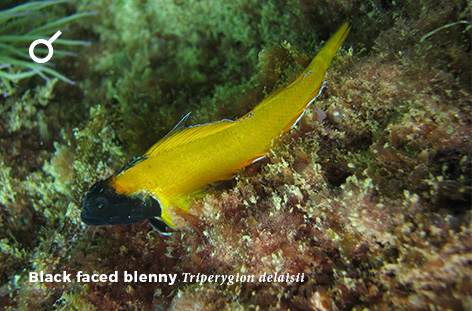Praia dos Arrifes (Albufeira)
The proposed route is located in the beach Praia dos Arrifes. This route was selected for having different and unusual habitats that are characteristic of the Algarve coastal area, including a seagrass meadow of Cymodocea nodosa, protected by the Habitat Directive.
The route starts in front of the beach support bar, bearing to the center of the two rocky outcrops that can be easily seen on the East side of the beach (average depth of 1-2m). The landscape of the first part of the route (zone A.I) is mostly composed of sand and pebbles with high algae cover (e.g. Halopteris spp., Codium spp., Plocamium cartilagineum, Jania spp., Ellisolandia elongata). Several macrobenthic species can be observed in this algae cover, such as: the marine gastropod mollusk (Gibbula cineraria and Gibbula pennanti), the snakelocks anemone (Anemonia viridis), the sea urchin (Paracentrotus lividus), the spiny starfish (Marthasterias glacialis), and the common brittlestar (Ophiothrix fragilis)Also, the diver should explore the presence of cryptic fish, such as the Bucchich’s goby (Gobius bucchichi), the ringneck blenny Parablennius pilicornis or the sand gobies (Pomatochistus spp).The presence of the starlet (Asterina gibbosa) must be highlighted, as it has a protected status under the Berne Convention in the Mediterranean region.
A closer observation of the sandy bay, delimited by the beach and by the rocky outcrops visible on the surface (zone A.II), is advised, as the sand and the pebbles, protected by the surrounding rocks, create unique habitats such as rocky enclaves. In both areas (zone A.I and A.II) salemas (Sarpa salpa), white seabreams (e.g. Diplodus sargus), common two-banded seabreams (Diplodus vulgaris),sand smelts (Atherina presbyter) and several species of wrasses (e.g. Symphodus bailloni or Symphodus melops) proliferate.
The visitor must now dive towards the middle of the two rocky outcrops (zone A.III) located in the East side of the beach (average depth of 3-4m). In this area the rocky enclaves intensify, with strong colonization of macroalgae similar the first zone of the route. Among the rocky crevices the diver can observe several animals such as: gobies, blennies, the spider crab (Maja brachydactyla), the common octopus (Octopus vulgaris), and the velvet crab (Necora puber),which select these zones for shelter and food. In fact, benthic macroinvertebrates such as nudibranchs (e.g. Felimare tricolor),sea urchins and sea anemones are extremely common in these ecosystems. Seabreams, sand smelts, salemas, and wrasses can also be easily seen in this part of the route. The diver can also observe the rock-pool blenny (Parablennius parvicornis), which was not previously registered for the Portuguese coast.
In the left rocky outcrop, the diver can explore the two cavities that cross through the outcrop (zone A.IV). Besides the beauty of the underwater sea caves, common octopus (O. vulgaris) can be frequently observed in these habitats. An interesting characteristic of these animals is its ability to “camouflage” (mimicry – the ability to imitate the environment through the transformation of color and/or body texture), as a response to danger. The episodic occurrence of the barrel jellyfish (Rhizostoma pulmo) must be highlighted in this area. If this occurs, the diver should leave the place, or pay special attention to the animal, since it possesses stinging cells on the tentacles.
When reaching the alignment with the beginning of the entrance to the pontoon of the Albufeira marina, the diver must aim towards the coast to explore one of the best preserved seagrass meadows of the specie C. nodosa that still exists in the South coast of Portugal (zone A.V). After going through the meadow, the direction must be inverted, and the visitor can begin the return to the starting point, crossing again the two rocky outcrops located in the East zone of the beach.
ACESSBeach |
HARBOUR DISTANCE– |
DIFFICULTYLow |
AVERAGE TIME25 min. |
MAX. DEPTH4m |
HABITATSand, Pebbles, Rocky outcrops, Seagrass meadows |
LANDSCAPE INTERESTHigh |
BIOLOGICAL INTERESTHigh |
CONSERVATION
|
SNORKELING |
CERTIFICATIONGood adaptation to water |
NOTESIn the summer season an interpretative wooden placard placed in the sandy area of the beach will provide all the information needed for self-guidance of the route. |
Conservation
This habitat requires appropriate conservation measures due to the occurrence of seagrass meadows (EU_Habitat Directive).

